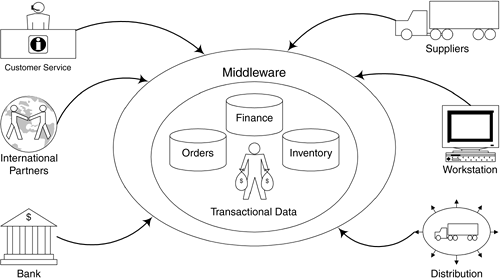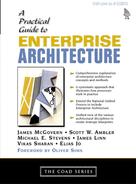The Business Problem
Kello James, the CTO of Canaxia, has enlisted us to form a data architecture strategy that is closely aligned with his company's business objectives. Kello has asked the team to look at the following:
Use of current databases for data mining of customer and competitor information
Protocols used for EDI and XML-based Web services for integration with Canaxia's business partners
Providing a unified view of customer information to all points within the organization
Ensuring that the organization's data maintains integrity and is not exposed to misuse by hackers, business partners, or other parties
The organizational context (Figure 11-1) provides input into the data architecture and is the primary tool for the management and sharing of enterprise data. It enables architects, data modelers, and stakeholders to identify, classify, and analyze information requirements across the enterprise, allowing the right priorities for data sharing initiatives. Data architecture states how data are persisted, managed, and utilized within an organization (as shown in Figure 11-1). Data architecture also describes the following:
How data are stored in both a transient and permanent manner
How components, services, and other processes utilize and manipulate the data
How legacy systems and external business partners access the data
How common data operations (create, read, update, delete) should occur in a consistent manner
Figure 11-1. Organizational context.

Now, let's see how we can help make Kello successful.
